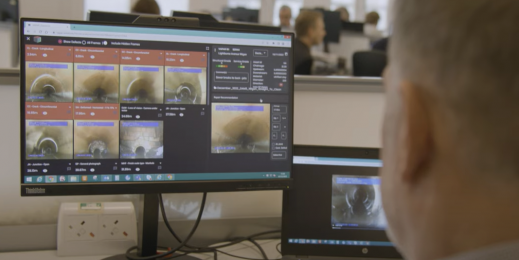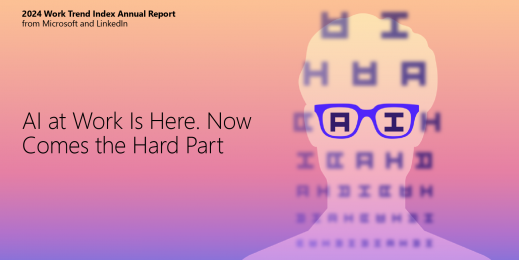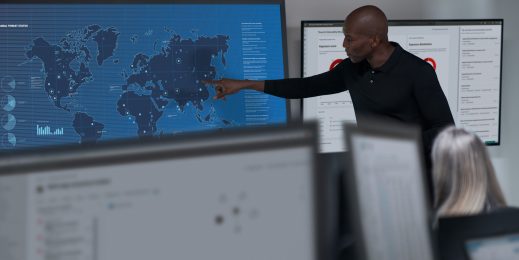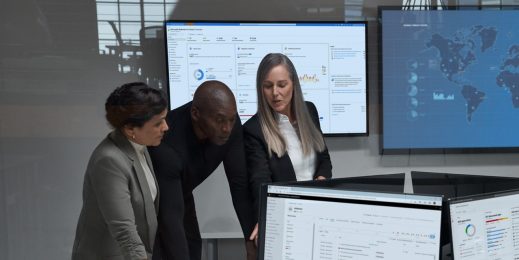
Responsible sourcing: How much do you know about your devices?
By Brett Shoemaker, Sustainability Director, Microsoft ANZ
Around the world, the pandemic has alerted businesses to the need for resilient supply chains.
Now, as we work to build supply chains strong enough to withstand future shocks, we are also looking to ensure they are fair and more sustainable than before.
According to research conducted by Microsoft and Goldsmiths, University of London for our Accelerating the journey to net zero reports, 58 per cent of Australian organisations and 46 per cent of New Zealand organisations are now applying environmental standards in their supply chains to enforce sustainability. At the same time, around half of the business leaders we surveyed are working to ensure the activities in their supply chain don’t deplete natural resources.
These are encouraging signs, but they don’t go far enough for true supply chain resilience.
At Microsoft, we’re hyper aware that technology supply chains can pose particular risks when it comes to unsustainable environmental practices, with potential harm arising anywhere from factories and mines to packaging and electronic waste management.
So, which areas of the supply chain pose the greatest challenges when it comes to sustainability? The recently published Microsoft Devices Reponsible Sourcing Report explores three key areas of risk that organisations should bear in mind when rethinking their supply chains.
Sourcing raw materials
The home office I’m writing from is far away from the smelting and mining sites producing the minerals that go into Microsoft’s devices. But this doesn’t mean I have no responsibility for the communities where these activities take place.
From factories and mines to logistics, transport, and recycling providers, Microsoft relies on a network of thousands of suppliers – and suppliers’ suppliers – all around the world. Every single part of our devices was made by someone, somewhere.
Tech companies need to lead with accountability and transparency when it comes to our supply chains. This means being transparent in our reporting. It means monitoring our environmental impact and taking proactive steps to ensure we have a positive social impact in the communities we depend on. And it means innovating to find newer, more sustainable ways of accessing raw materials, so that we can ease our dependency on practices like land mining.
Deep-sea mining is one innovative process we’re looking into at Microsoft. Many of the minerals we use on land can also be found in the deep sea, as well as some others that are unique to the seabed. Deep-sea mining is the process of retrieving those minerals from the ocean floor.
It’s a compelling idea, but because the practice is relatively new, its environmental impact is not yet fully understood. And while finding new ways to access raw materials is important, it’s crucial that we do our due diligence to understand the impacts of alternative options before transitioning to them.
For now, Microsoft has established a moratorium on using minerals sourced through deep-sea mining until trusted scientific studies have been completed.
Tackling electronic waste
At 50 million tonnes every year, electrical and electronic equipment waste is the fastest growing waste stream in the world. In Australia, we only recycle 10 per cent of our old PCs and laptops; the rest is sitting in landfill.
Plastic accounts for roughly 20 per cent of this waste. In our efforts to achieve zero waste by 2030, Microsoft has been innovating ways to minimise waste generation and single-use plastics throughout our product range. We’ve developed the Microsoft Ocean Plastic Mouse, made with 20 per cent recycled ocean plastic. And we’re working towards 100 per cent recyclable Surface devices by 2030.
The tech industry needs to transition from the traditional, linear, ‘take-make-waste’ model of raw material consumption to a more circular model, preserving finite resources by instead keeping them in use for as long as possible.
Commonly used in tech products, metals like aluminium, copper, gold, platinum, silver, palladium, lithium and cobalt are all projected to be in short supply in the coming decade. And unfortunately, it is much quicker and easier to mine and extract these minerals than it is to recapture them for reuse.
This is a big challenge for the whole industry.
Each mineral has a different recapture and reuse potential, and each requires different processes to get recycled material back into the manufacturing supply chain.
Appropriate recapture processes and capabilities need to be developed to recover materials of an acceptable purity and grade for effective reuse, and no one player can achieve this alone. That’s why we’re working with others in our industry to find a more sustainable way forward.

Reducing carbon emissions
Any organisation looking to reduce its emissions and assess its carbon footprint should start with its supply chain, as this is likely to be the major source of emissions.
At Microsoft, we know that many of our customers are looking to reduce their IT-related emissions. Their commitments are one driver behind our own push to reduce our Scope 3 emissions by 50 per cent by 2030. And we have first-hand experience of how challenging this can be. Having just reported a rise in our Scope 3 emissions, we are applying our learnings and implementing new measures to tackle this challenge.
Our Scope 3 emissions include all aspects of our supply chain as well as the entire lifecyle of our products, right down to the electricity our customers use when operating a Microsoft device.
One way we’re trying to reduce them is by working to make our devices more energy efficient. We’ve achieved a 30 per cent reduction in total carbon emissions for Surface Laptop Studio compared to its predecessor, Surface Book 3 13″. We have also reduced the total energy consumption of the Surface Pro 8 by 17 per cent compared to the Surface Pro 7.
But the issue runs deeper than that, and it requires us to engage with and empower all our suppliers to commit to carbon-reduction activities, and to provide them with support as they transition to renewable alternatives.
This all starts with data, which is why we are improving the accuracy and comprehensiveness of our emissions tracking data, especially as it relates to our Scope 3 emissions.
We now have data from more than 87 per cent of our suppliers, the majority of which we include in our own carbon accounting report. This insight helps us understand where to direct our focus. Because, across our supply chain, the suppliers contributing the most emissions can offer us the greatest potential carbon reductions.
Practising responsible sourcing
Reducing carbon emissions, minimising waste and preserving finite resources are crucial steps. But they’re not the only considerations we should keep in mind when it comes to responsible procurement.
Building a truly sustainable supply chain requires us to take an ethical and considered approach to all impacts we have as an organisation – including those on the communities we operate in. We cannot sustainably invest in new technology, processes and policies without also investing in the people, communities and economies that we work with along our supply chain.
That’s why 100 per cent of active supplier factories in the Microsoft Devices supply chain were risk assessed in FY21. These audits investigated issues like working hours, occupational safety and industrial hygiene to ensure that every person who works with us can enjoy a safe and healthy workplace. To underscore the importance of transparency,we pubish all non-compliance data in a public Power BI format.
In the past year, our due diligence resulted in US$1.5 million being paid to over 36,000 workers in our supply chain to make up for past insufficient payments. We also set up the Worker’s Voice Hotline, empowering 333,113 workers with an avenue for raising internal grievances and concerns – and giving us the opportunity to create a better work environment.
Our commitment to responsible sourcing goes beyond compliance. We understand that the success of our business, today and tomorrow, depends on our ability to build a supply chain that’s sustainable in every sense of the word – for the planet and for people.
You can learn about the communities where we operate and our approach to supply chain sustainability in our Microsoft Devices Responsible Sourcing Report FY21.














